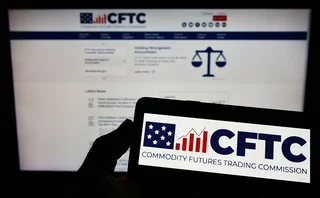
Calmer markets reflected in VAR figures
Lower volatility across asset classes in the second quarter of the year produced lower value-at-risk figures at almost all major banks, according to a Risk survey.
Available figures for major bank VAR over the second quarter of 2009 show an average fall of 13.8% in overall VAR. This result was carried on over most asset classes: interest rate VAR, the largest single category, fell an average of 3.6%; currency VAR fell 8.8%; and equity VAR fell 15.5%. Commodity VAR rose an average of 14.2%, but remained by far the smallest contributor to overall VAR.
This corresponds with a quarter in which measures of volatility across asset classes fell noticeably. The Merrill Lynch Move index, a yield curve-weighted average of the normalised implied volatility of one-month Treasury options, averaged 142.35 for the quarter, down 4.6% from 149.25 in the first quarter of the year. The CBOE Vix index of equity market volatility as implied by 30-day S&P option prices averaged 32.94, down from 45 the quarter before. One measure of commodity price volatility, the CBOE's Crude Oil Volatility Index, also fell significantly, down 33.6% from 73.68 to 48.95. And the Deutsche Bank CVix currency volatility index, which is based on the implied volatility of options on nine major currency pairs, dropped 21.7% from 19.09 to 14.95.
The only exception to the trend was Goldman Sachs, which saw another increase in average VAR over the quarter, as it has done in every quarter save one since mid-2006. Measured at the one-day horizon and a 95% confidence level, the bank's average VAR rose from $240 million to $245 million. The bank noted its VAR figure had increased from 2008 because of higher interest-rate VAR. However, between March and June, this figure actually fell, and the increase over that period was in fact almost entirely due to an increase in equity VAR from $38 million to $60 million.
The bank's equity and principal investment departments performed significantly better in the second quarter than in the first: net equities revenue climbed from $2 billion to $3.18 billion, "reflecting significantly higher net revenues in derivatives and, to a lesser extent, principal strategies", the bank said. It added it had "increased equity exposures" over the course of the second quarter. Principal investments brought in $811 million in the second quarter, compared with a net loss of $1.41 billion in the first quarter, driven mainly by a $948 million gain on its shares in the Chinese bank ICBC.
Meanwhile, very few VAR exceptions (days on which actual loss exceeds VAR) have been reported this year. Morgan Stanley reported one in the first quarter of the year (at 95% confidence and a one-day window) but none in the second, while UBS reported two at 99% confidence over 10 days in the first quarter and another two in the second.
Bank of America, Credit Suisse, Goldman Sachs and JP Morgan, all of which have reported exceptions in the past, reported none in 2009 - even though, given their confidence limits, all would have expected, statistically speaking, to report at least one or two, and potentially as many as five.
See also: The risk of value-at-risk
Challenging times for VAR
Quant Congress Europe: VAR models still essential
The year of living riskily
Only users who have a paid subscription or are part of a corporate subscription are able to print or copy content.
To access these options, along with all other subscription benefits, please contact info@risk.net or view our subscription options here: http://subscriptions.risk.net/subscribe
You are currently unable to print this content. Please contact info@risk.net to find out more.
You are currently unable to copy this content. Please contact info@risk.net to find out more.
Copyright Infopro Digital Limited. All rights reserved.
As outlined in our terms and conditions, https://www.infopro-digital.com/terms-and-conditions/subscriptions/ (point 2.4), printing is limited to a single copy.
If you would like to purchase additional rights please email info@risk.net
Copyright Infopro Digital Limited. All rights reserved.
You may share this content using our article tools. As outlined in our terms and conditions, https://www.infopro-digital.com/terms-and-conditions/subscriptions/ (clause 2.4), an Authorised User may only make one copy of the materials for their own personal use. You must also comply with the restrictions in clause 2.5.
If you would like to purchase additional rights please email info@risk.net
More on Regulation
FCMs call for more oversight of self-clearing CCP members
Clearing firms worry that PTFs and market-makers joining CCPs en masse will increase systemic risk
Complex EU active account reporting could drive trades out of UK
Draft Emir rules might not force large volumes to move to EU, but will make compliance difficult
Capital neutrality key to completing Basel III, says Quarles
Former Republican Fed vice-chair thinks Hill or Bowman could help revive stalled prudential rules
Review of 2024: as markets took a breather, firms switched focus
In the absence of major crises and rules deadlines, financial firms revamped strategy, services and practices
Dora flood pitches banks against vendors
Firms ask vendors for late addendums sometimes unrelated to resiliency, requiring renegotiation
Swiss report fingers Finma on Credit Suisse capital ratio
Parliament says bank would have breached minimum requirements in 2022 without regulatory filter
‘It’s not EU’: Do government bond spreads spell eurozone break-up?
Divergence between EGB yields is in the EU’s make-up; only a shared risk architecture can reunite them
CFTC weighs third-party risk rules for CCPs
Clearing houses could be required to formally identify and monitor critical vendors







